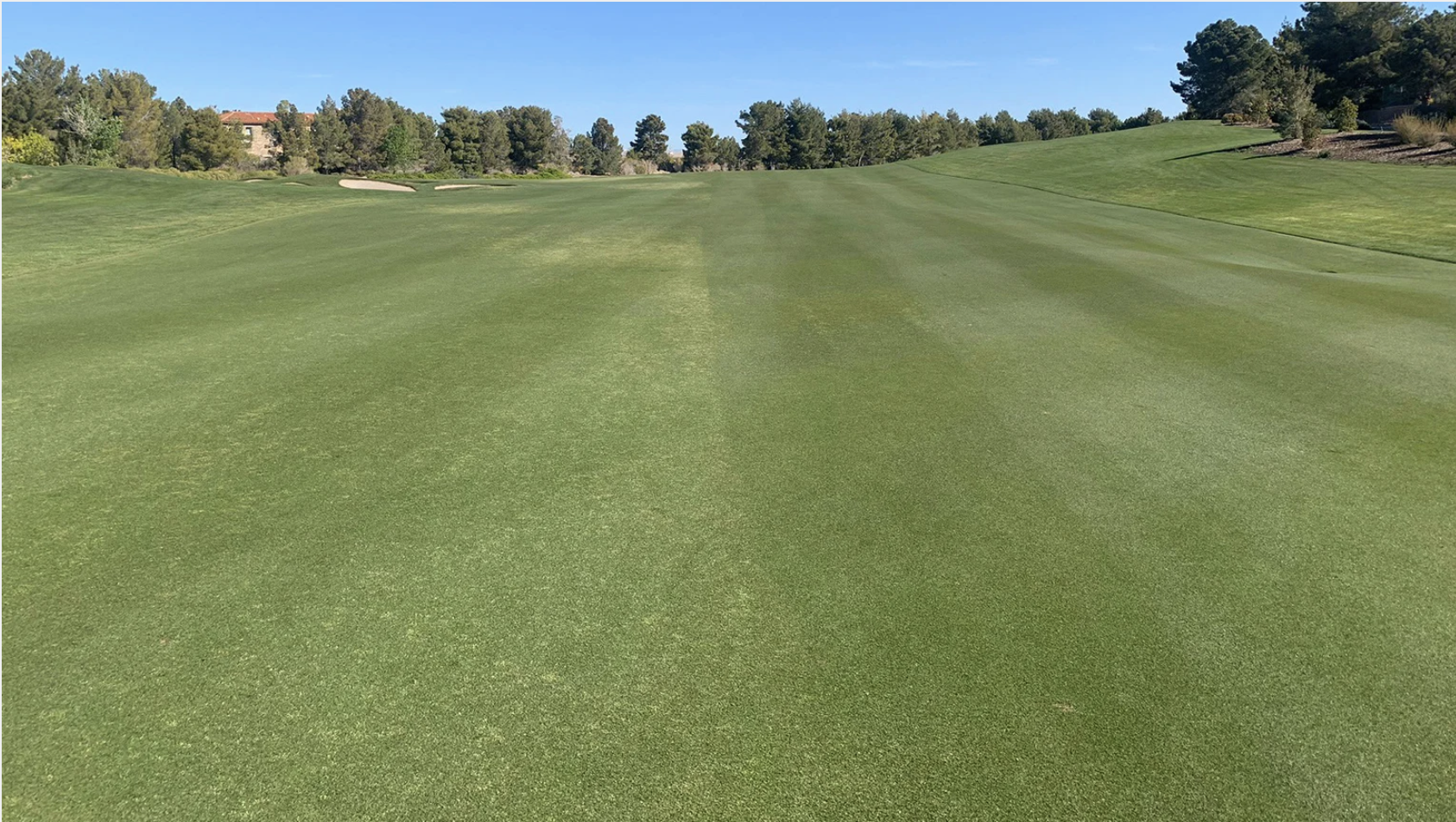USGA – West Update
Golf courses with bermudagrass fairways, whether overseeded or not, struggle to keep Poa annua at bay. Continued reliance on preemergence and postemergence herbicides has been shown to result in herbicide-resistant Poa annua plants. As an alternative to chemical control, golf courses in Arizona, southern Nevada and southern California have been using mechanical removal and seeing good results. For large areas such as fairways, fraise mowing has been the preferred method. A sod cutter can be used to remove Poa annua from small areas, severe slopes or around sprinklers where the fraise mower can’t be used.
However, for most courses, the disruption to the playing surface caused by fraise mowing is too much. Recovery from fraise mowing, depending on the depth and time of year, typically requires three to four weeks. If all the fairways are treated, course closure is necessary during the recovery process, which is why many courses have ruled out this method.
One golf course owner was impressed with the results from fraise mowing small areas, but was adamant about keeping the course open for play. Being an optimistic, glass-half-full kind of guy, he proposed the idea of fraise mowing the right side of fairways one year and the left side the next. Golfers that find their ball on the treated side simply pick up and play from the untreated side until recovery is complete three or four weeks later. As shown in the image, the results have been striking in terms of Poa annua control. Here are a few details about the fraise mowing process:
- One fraise mowing machine can treat approximately 3.3 acres per day.
- The depth must be set at 0.75-1.0 inch for the first fraise mow to achieve successful Poa annua control. If you are able to repeat the process every two to three years, a shallower depth can be used in subsequent years.
- Gathering and disposing of the debris is critical to controlling Poa annua.
- You will need to have numerous trailers on hand to run alongside the fraise mower for debris collection. For reference, at the 0.75-inch depth, the machine can fill a large golf course trailer in 90 seconds.
- Fertilize the bermudagrass the week prior to treatment to expedite recovery and continue to add nitrogen during the grow-in process.
- Where the bermudagrass stand is weak, superintendents have found success expediting recovery by spreading aeration plugs from healthy areas that are free of Poa annua. Vertical mowing of weed-free bermudagrass roughs and using the sprigs to augment weak areas in fairways is also a good option.
- Sand topdressing approximately two weeks after fraise mowing helps to speed recovery, produce a smoother surface, and tie-in the treated and non-treated area.
- Bury the debris on site in an area of out play, or plan to haul the green waste off site in 40-yard dumpsters.
Beyond Poa annua control, the fraise mowing process significantly improves bermudagrass health and playability. The result is a firmer, smoother surface and courses that overseed will reap benefits from the improved seedbed. While fraise mowing is not for everyone, this half-and-half process may be worth considering for those courses that need to remain open during the summer and want to continue improving golf course playing conditions and aesthetics. Below are a few additional references on fraise mowing:
“Clark Talks Turf: Digging Deep Into Fraze Mowing”
“Benefits and Limitations of Fraze Mowing”
Best wishes to all and please do not hesitate to contact your regional USGA agronomist for more information on fraise mowing or other agronomic practices.
I would like to thank Jock Eddington of Sports Turf Services for contributing to this update.
West Region Agronomists:
Brian S. Whitlark, agronomist – bwhitlark@usga.org
Cory Isom, agronomist – cisom@usga.org
